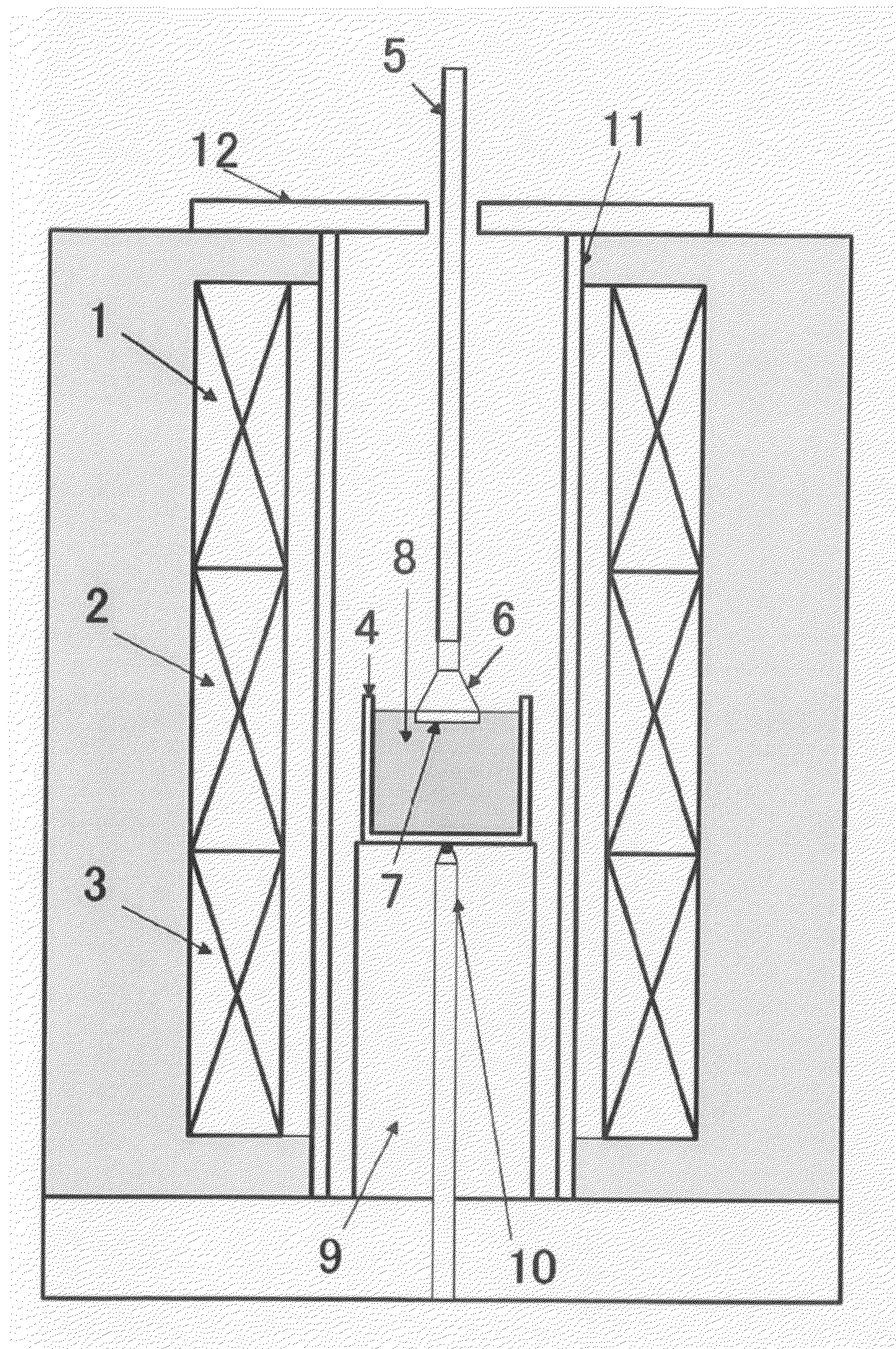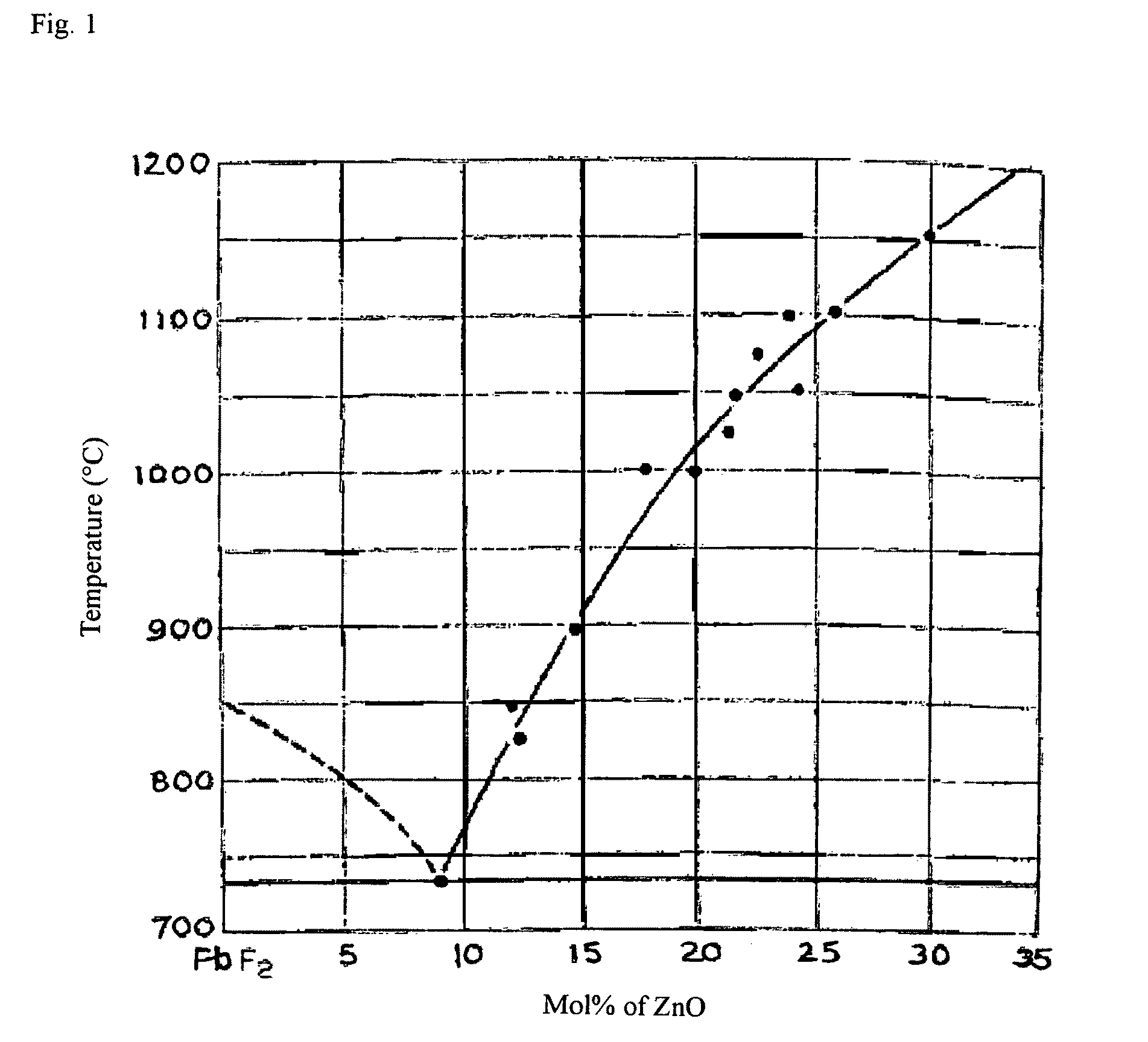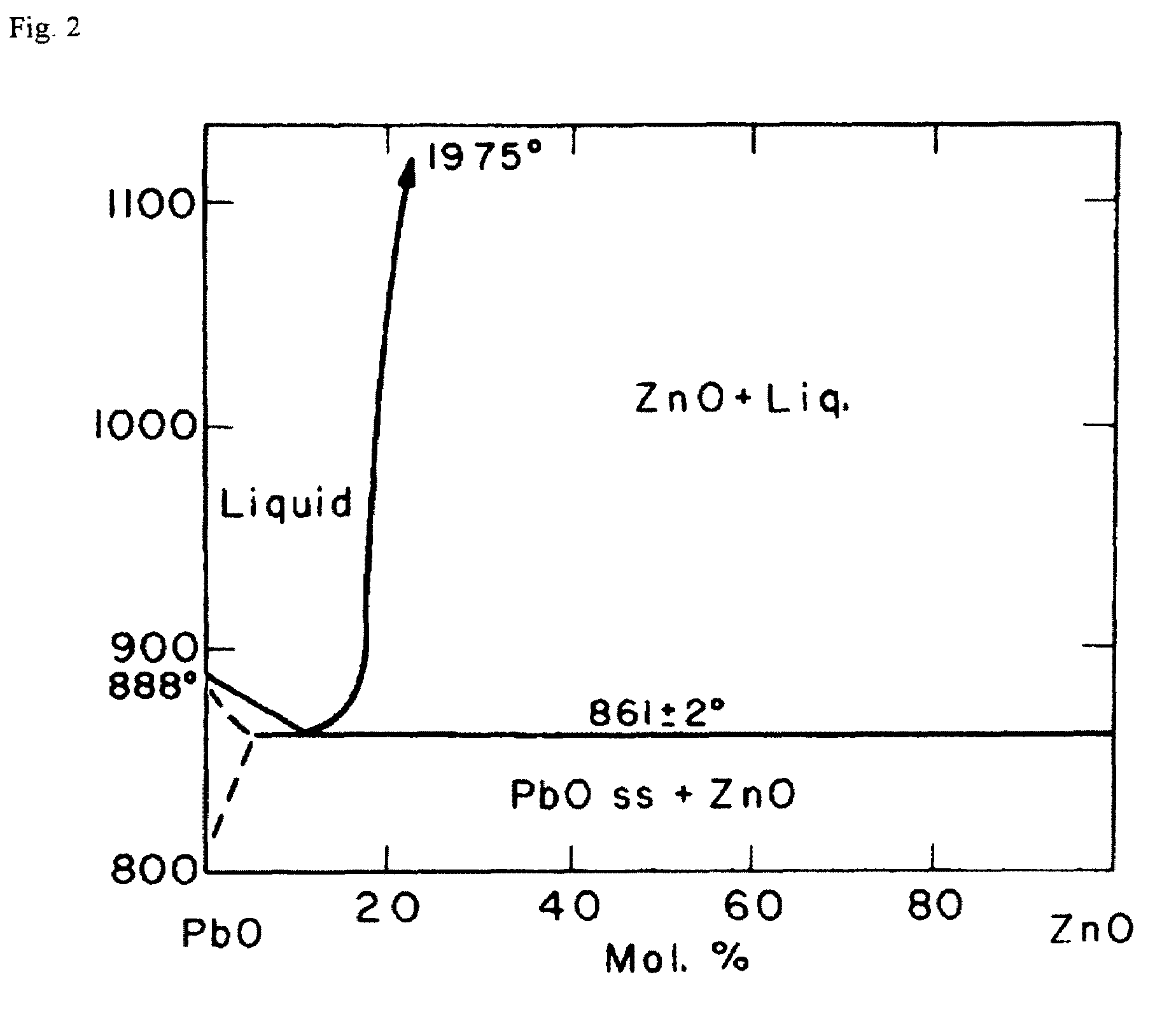Process for producing ZnO single crystal according to method of liquid phase growth
a technology of liquid phase growth and zno, which is applied in the direction of crystal growth process polycrystalline material growth, etc., can solve the problems of difficult growth of zno, low crystal quality, insufficient quality of resultant crystals, etc., and achieves low cost, low dislocation and defect, the effect of low cos
- Summary
- Abstract
- Description
- Claims
- Application Information
AI Technical Summary
Benefits of technology
Problems solved by technology
Method used
Image
Examples
example 1
[0072]A ZnO single crystal was produced by a TSSG technique. Into a platinum crucible having an inner diameter of 75 mmφ, a height of 75 mmh and a thickness of 1 mm, ZnO, PbF2 and PbO as materials were put in respective amounts of 50.56 g, 922.58 g and 754.87 g. In this case, the concentration of ZnO as the solute is about 8 mol %, and the concentration ratio of PbF2:PbO as the solvents is about 47.3 mol %:52.7 mol %. The crucible accommodating the materials was set in the furnace shown in FIG. 5, and the materials were dissolved with the temperature at the bottom of the crucible being about 1000° C. The materials were kept at this temperature for 3 hours and then cooled until the temperature at the bottom of the crucible became 900° C. Then, a platinum block as the seed crystal was put into contact with the melted solution, and the crystal was grown at this temperature for 6 hours while the alumina lifting shaft was rotated at 60 rpm. In this step, the rotation direction of the sha...
example 2
[0073]A ZnO single crystal was produced by a liquid phase epitaxial growth (LPE) technique. Into a platinum crucible having an inner diameter of 75 mmφ, a height of 75 mmh and a thickness of 1 mm, ZnO, PbF2 and PbO as materials were put in respective amounts of 32.24 g, 922.58 g and 839.88 g. In this case, the concentration of ZnO as the solute is about 5 mol %, and the concentration ratio of PbF2:PbO as the solvents is about 50.0 mol %:50.0 mol %. The crucible accommodating the materials was set in the furnace shown in FIG. 5, and the materials were dissolved with the temperature at the bottom of the crucible being about 940° C. The materials were kept at this temperature for 3 hours and then cooled until the temperature at the bottom of the crucible became about 835° C. Then, a ZnO single crystalline substrate grown by a hydrothermal technique and having a size of 10 mm×10 mm×0.5 mmt with a C face was, as a seed crystal, put into contact with the melted solution, and the crystal w...
example 3
[0074]A ZnO single crystal was produced by a liquid phase epitaxial growth (LPE) technique. Into a platinum crucible having an inner diameter of 75 mmφ, a height of 75 mmh and a thickness of 1 mm, ZnO, PbF2 and PbO as materials were put in respective amounts of 12.50 g, 922.58 g and 839.88 g. In this case, the concentration of ZnO as the solute is about 2 mol %, and the concentration ratio of PbF2:PbO as the solvents is about 50.0 mol %:50.0 mol %. The crucible accommodating the materials was set in the furnace shown in FIG. 5, and the materials were dissolved with the temperature at the bottom of the crucible being about 830° C. The materials were kept at this temperature for 3 hours and then cooled until the temperature at the bottom of the crucible became 725° C. Then, a ZnO single crystalline substrate grown by a hydrothermal technique and having a size of 10 mm×10 mm×0.5 mmt with a C face was, as a seed crystal, put into contact with the melted solution, and the crystal was gro...
PUM
| Property | Measurement | Unit |
|---|---|---|
| mol % | aaaaa | aaaaa |
| melting point | aaaaa | aaaaa |
| temperature | aaaaa | aaaaa |
Abstract
Description
Claims
Application Information
 Login to View More
Login to View More - R&D
- Intellectual Property
- Life Sciences
- Materials
- Tech Scout
- Unparalleled Data Quality
- Higher Quality Content
- 60% Fewer Hallucinations
Browse by: Latest US Patents, China's latest patents, Technical Efficacy Thesaurus, Application Domain, Technology Topic, Popular Technical Reports.
© 2025 PatSnap. All rights reserved.Legal|Privacy policy|Modern Slavery Act Transparency Statement|Sitemap|About US| Contact US: help@patsnap.com



